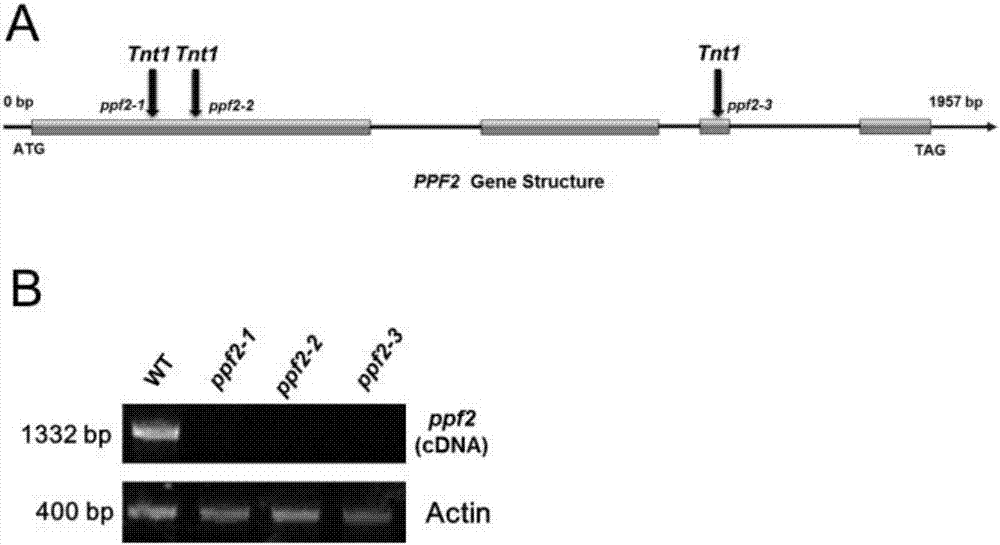Application of PINNATE PENTAFOLIATA2 gene in regulating and controlling leaflet quantity of leguminous plants
A leguminous plant and gene technology, applied in the field of genetic engineering, can solve the problems that the production performance of multi-leaf alfalfa varieties does not show obvious advantages, and the regulation of small leaves has not yet been seen.
- Summary
- Abstract
- Description
- Claims
- Application Information
AI Technical Summary
Problems solved by technology
Method used
Image
Examples
Embodiment 1
[0018] Example 1 Cloning of Medicago truncatula gene PINNATE PENTAFOLIATA2
[0019] 1. Cloning of Medicago truncatula PINNATE PENTAFOLIATA2 gene
[0020] Obtain the sequence of Arabidopsis thaliana PINNATE PENTAFOLIATA2 through the bioinformatics website NCBI, and then use BLAST to perform a sequence alignment search to obtain the genome sequence of PINNATE PENTAFOLIATA2 (as shown in SEQ ID No.1), and the amino acid sequence of its expressed protein is as shown in SEQ ID No.2 is shown. The primers shown in SEQ ID No.3 and SEQ ID No.4 were designed according to the sequences. The RNA of Medicago truncatula was extracted by TRIzol kit, and the full-length CDS sequence of PINNATEPENTAFOLIATA2 gene was amplified by RT-PCR. The gene sequence was connected into the pEARLEYGATE201 vector by using Gateway technology, and then the sequence was determined to verify the correctness of the cloned sequence.
[0021] Example 2 Obtaining and identification of Medicago truncatula PINNATE P...
PUM
 Login to View More
Login to View More Abstract
Description
Claims
Application Information
 Login to View More
Login to View More - R&D
- Intellectual Property
- Life Sciences
- Materials
- Tech Scout
- Unparalleled Data Quality
- Higher Quality Content
- 60% Fewer Hallucinations
Browse by: Latest US Patents, China's latest patents, Technical Efficacy Thesaurus, Application Domain, Technology Topic, Popular Technical Reports.
© 2025 PatSnap. All rights reserved.Legal|Privacy policy|Modern Slavery Act Transparency Statement|Sitemap|About US| Contact US: help@patsnap.com


